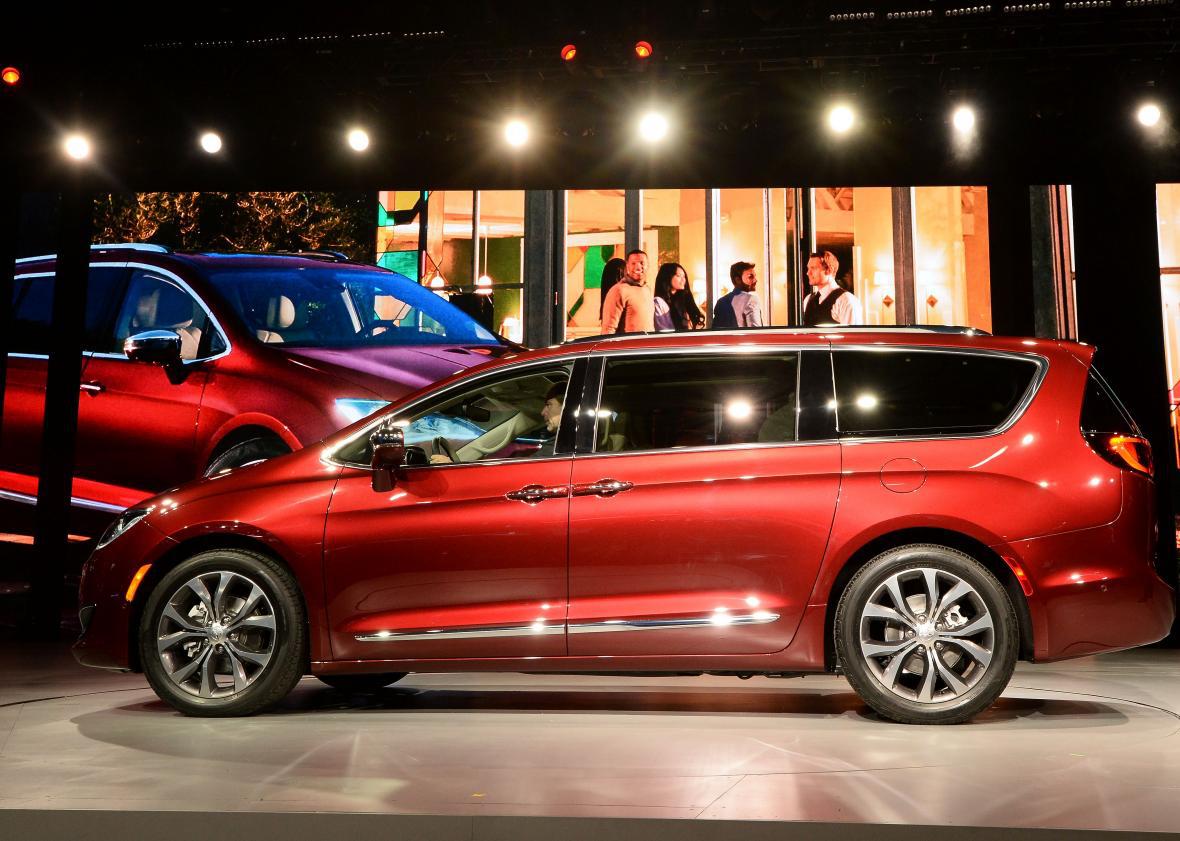Google’s next self-driving car isn’t a car. It’s a minivan.
The tech giant on Tuesday announced a deal with the Italian-American carmaker Fiat Chrysler to build 100 driverless 2017 Chrysler Pacifica Hybrid minivans, with the first ones hitting the road late this year. Google is not selling or licensing any of its technology to Chrysler Fiat, Bloomberg notes. Rather, it’s working with the company to make sure the vehicles are specially designed to accommodate the software. From Google’s announcement:
This collaboration with Fiat Chrysler Automobiles (FCA) is the first time we’ve worked directly with an automaker to create our vehicles. FCA will design the minivans so it’s easy for us to install our self-driving systems, including the computers that hold our self-driving software, and the sensors that enable our software to see what’s on the road around the vehicle. The minivan design also gives us an opportunity to test a larger vehicle that could be easier for passengers to enter and exit, particularly with features like hands-free sliding doors.
The deal will more than double Google’s autonomous vehicle fleet, which comprises several dozen retrofitted Lexus SUVs and Google’s own adorable driverless prototypes. (Note that Google didn’t work with Lexus on those SUVs. It bought them and then had its engineers modify them as autonomous vehicles.) The company has expanded its testing of self-driving vehicles in the past year from its home base in Mountain View, California, to three other cities: Austin, Texas; Kirkland, Washington; and Phoenix.
Some companies, such as Tesla, have tried to pave the way for our automotive future by building beautiful, racy cars that become objects of desire. Google seems to be taking pretty much the opposite approach, focusing on safety and practicality to the exclusion of curb appeal.
That makes sense when you consider how people are likely to use cars that are fully driverless, as opposed to those that simply offer an autopilot mode. If you can’t drive it, there’s no point in making it fun to drive. And if you don’t own it—that is, if it’s used primarily a taxi that shuttles people from place to place on demand—then there’s not much point in making it pretty, either.
Google’s own driverless prototypes rethought a lot of what goes into a traditional vehicle, from the brakes to the steering wheel. One thing they didn’t rethink was the notion that people would still make a lot of solo trips when they no longer own their own cars. A driverless future might well be one in which people often travel in larger groups: think Lyft Line and UberPool. Hence the move into minivans.
That’s right, soccer moms and soccer dads: The robots are coming for your jobs too.
